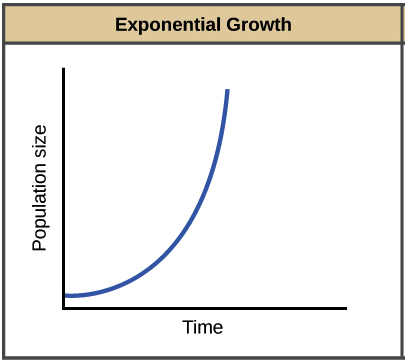Incredibly a fairly recent survey showed that most people don’t really think the world is a better place. In Sweden only 10% of those asked thought things were better, in the US only 6% and in Germany a tiny 4%. How could that be.
Isn’t it true that we have better lives than our forefathers? We are able to do so much and have so much more. From better health and nutrition to education and to leisure. We are able to eat the best foods and enjoy the latest gadgets and even win an online poker game.
But has the world changed? It is necessary to take a historical look – at Sexy Gaming. Has the world really changed globally, for everyone? Is there evidence for real change?
1. Poverty
We need to go a long way back in history in order to really learn if life has changed. It’s not enough just to go back 50 years or so. That really doesn’t tell us enough. We make the mistake of thinking that there has been little real change.
We conclude that there are the prosperous parts of the world and the less prosperous and that’s just the way it is. But the world is really not static. Some of the most prosperous countries today were the poorest yesterday, and vice versa.
Living conditions really took a dramatic turn- around two hundred years ago. Today extreme poverty is measured as subsisting on less than $1.90 per day. This also takes into consideration income which is non-monetary like subsistence farming. The poverty level is adjusted according to countries and price levels and takes inflation into account.
In the beginning of the 19th century only a very small minority were fortunate to have a higher standard of living. Most people lived in very poor conditions. However, since that time the number of people living in extreme poverty has dropped and continues to drop.
As more of the world became industrialized, productivity increased and raised living conditions. By 1950 the number of people living in dire poverty was still three-quarters of the world population. By 1981 that figure was still around 44 percent.
Now that figure has dropped to below 10 percent. The population of the world has in fact increased seven-fold in the last 200 years and therefore, this is truly an immense achievement. The opposite would have been the expected result but there are actually less people living in poverty.
Because of the increase in productivity more of the vital services became more available. There was more food, clothing and housing. Increased productivity equals more output and less input – less working hours need.
Economic growth changed everything. It allowed people to prosper. Increased productivity and the growth of technology made some people very rich but it also helped others to prosper. Of course, things do go wrong. We tend to focus on the events where things don’t work out and pay little attention to the slow but positive developments taking place that are changing the way in which we live.
We do have real data showing the reduction in poverty levels. It would be useful for the media to put this information out and to keep it out there so people are aware of the progress being made.
2. Improved Literacy

There has been change over the last two hundred years in the level of world literacy. Today it is expected that most of the population will be literate. This was not how it used to be with only a very small number of people being able to read and write.
The huge increase in world literacy is a something that should be seen as a huge accomplishment. Only every tenth person was able to read and write in 1820. By 1930 it had reached every third person and now 85% of the world’s population is literate.
In order to benefit from science and technology and to make real changes in the world, reading and writing skills are important. An increase in the global literacy rate has improved this situation and allows many to take advantage of these advances.
3. Health And Medicine
Knowledge is a great thing but most people have no idea how bad things used to be. The mortality rate in 1800 was very high, around 43% of children never reached their fifth year. This was the case all around the world, not just in specific regions.
Modern medicine has played a role in improved health but increased prosperity, leading to better housing and improved standards of hygiene have helped to fight against deadly infectious diseases. We also understand more about diet and eating healthier and higher productivity in the agricultural field has improved the situation greatly.
But medicine and science have certainly made a huge contribution in reducing mortality and diseases. The discovery of the germ theory of disease in the late 19th century was particularly impactful. The understanding that something simple like washing of hands, hygiene and public sanitation were essential for healthy living.
This lead onto the development of antibiotics and vaccines. We all benefit from everyone being vaccinated. Global health became a priority and health worldwide improved exponentially. By 2015 the child mortality rate had dropped to 4.3 percent.
4. Political Freedom
Political freedom and civil liberties have changed considerably over the last two hundred years. During the 19th century most people lived in colonial systems and the remainder lived in autocratically rules countries. By the second half of the 20th century the situation was dramatically different.
Many colonial empires had collapsed and many countries became democratic. More and more populations were living in democratic systems and this is continuing to increase. Also, in the last 30 years there has been a global improvement in human rights protection.
5. Population Growth

In 1800 and world population was around 1 billion. This figure has since grown sevenfold. This growth did require more resources and had an impact on the environment. However, it also shows how the mortality rate has dropped significantly and that is a good thing.
Fertility in earlier days was high but many of these children died. Now women are able to have less children as the mortality rate is low and these children survive into adulthood.
The shift from high mortality and fertility to low mortality and fertility is named the demographic transition. This transition took place first in industrialized countries but gradually took place in other countries as well. Fertility on a global level has basically halved in the last 50 years.
Now women have 2.5 children whereas in 1960 they were having 5. We are coming to the end of population growth.
6. Education
No progress could have occurred without the growth of knowledge and education. Education became vital to progress. Globally education is improving all the time. And we can assume that educational progress will continue to expand into the future.
Now, with lower global fertility rates the number of children will begin to decline. Along with this, from an educational perspective, researchers argue that by 2100 the majority of people will have some form of formal education.
This would be an immense achievement. Education does promote health, political freedom and puts an end to poverty.
7. Focus On The Positive

But in spite of all the above, there is a negative perspective that most people seem to have about global development, even with the empirical evidence to show the opposite.
The media, unfortunately, focuses on things whenever they go wrong. It barely looks at the positive changes and achievements. Perhaps because progress takes place gradually and are not single events which are usually what the media focusses on.
Therefore, a large majority of people are totally unaware of the progress occurring and about global development. People are not aware that poverty has, and is, being tackled with success and there is a big reduction in extreme poverty worldwide.
In Conclusion
There has been a transformation in the way we live and our living conditions over time. This has been a collaborative effort. It shows that things can change. However, there is still much to do.
There is still poverty in the world which needs to be eradicated. We need to seriously deal with our impact on the environment as it is at a level which is non-sustainable.
We know that there are big problems that need solving. There are people committed to solving these problems. There have been huge changes and progress made. The world is generally richer, healthier and more educated.









